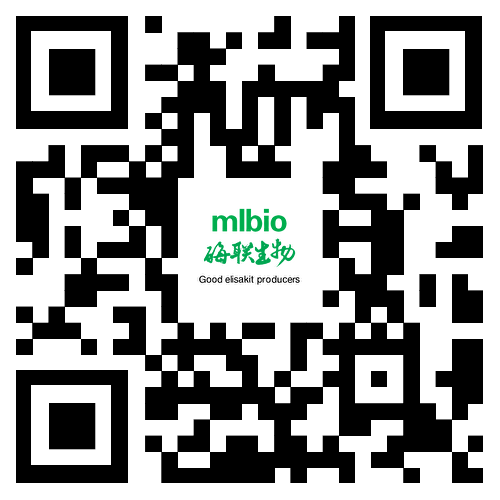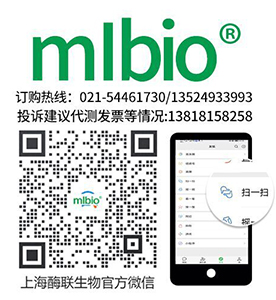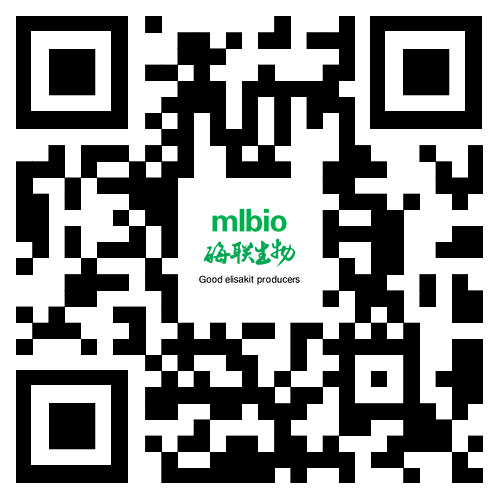產(chǎn)品貨號 : mlR1558
英文名稱 : Collagen VII
中文名稱 : 7型膠原抗體
別 名 : Collagen Type VII; Alpha 1 type VII collagen; COL7A1; Collagen alpha 1(VII) chain; Collagen type VII alpha 1; Collagen VII alpha 1 polypeptide; CollagenVII; EBD 1; EBD1; EBDCT; EBR 1; EBR1; LC collagen; Long chain collagen.
研究領(lǐng)域 : 免疫學(xué)
抗體來源 : Rabbit
克隆類型 : Polyclonal
交叉反應(yīng) : Human, Mouse, Rat, Dog, Pig, Cow, Rabbit,
產(chǎn)品應(yīng)用 : ELISA=1:500-1000 IHC-P=1:400-800 IHC-F=1:400-800 IF=1:100-500 (石蠟切片需做抗原修復(fù))
not yet tested in other applications.
optimal dilutions/concentrations should be determined by the end user.
分 子 量 : 322kDa
細胞定位 : 細胞外基質(zhì)
性 狀 : Lyophilized or Liquid
濃 度 : 1mg/ml
免 疫 原 : KLH conjugated synthetic peptide derived from human Collagen VII:2801-2944/2944
亞 型 : IgG
純化方法 : affinity purified by Protein A
儲 存 液 : 0.01M TBS(pH7.4) with 1% BSA, 0.03% Proclin300 and 50% Glycerol.
保存條件 : Store at -20 °C for one year. Avoid repeated freeze/thaw cycles. The lyophilized antibody is stable at room temperature for at least one month and for greater than a year when kept at -20°C. When reconstituted in sterile pH 7.4 0.01M PBS or diluent of antibody the antibody is stable for at least two weeks at 2-4 °C.
PubMed : PubMed
產(chǎn)品介紹 : This gene encodes the alpha chain of type VII collagen. The type VII collagen fibril, composed of three identical alpha collagen chains, is restricted to the basement zone beneath stratified squamous epithelia. It functions as an anchoring fibril between the external epithelia and the underlying stroma. Mutations in this gene are associated with all forms of dystrophic epidermolysis bullosa. In the absence of mutations, however, an acquired form of this disease can result from an autoimmune response made to type VII collagen.
Function:
Stratified squamous epithelial basement membrane protein that forms anchoring fibrils which may contribute to epithelial basement membrane organization and adherence by interacting with extracellular matrix (ECM) proteins such as type IV collagen.
Subunit:
Homotrimer. Interacts with MIA3/TANGO1; facilitating its loading into transport carriers and subsequent secretion.
Subcellular Location:
Secreted, extracellular space, extracellular matrix, basement membrane.
Post-translational modifications:
Prolines at the third position of the tripeptide repeating unit (G-X-Y) are hydroxylated in some or all of the chains.
DISEASE:
Note=Epidermolysis bullosa acquisita (EBA) is an autoimmune acquired blistering skin disease resulting from autoantibodies to type VII collagen.
Epidermolysis bullosa dystrophica, autosomal dominant (DDEB) [MIM:131750]: A group of autosomal dominant blistering skin diseases characterized by tissue separation which occurs below the dermal-epidermal basement membrane at the level of the anchoring fibrils. Various clinical types with different severity are recognized, ranging from severe mutilating forms to mild forms with limited and localized scarring, and less frequent extracutaneous manifestations. Note=The disease is caused by mutations affecting the gene represented in this entry.
Epidermolysis bullosa dystrophica, autosomal recessive (RDEB) [MIM:226600]: A group of autosomal recessive blistering skin diseases characterized by tissue separation which occurs below the dermal-epidermal basement membrane at the level of the anchoring fibrils. Various clinical types with different severity are recognized, ranging from severe mutilating forms to mild forms with limited and localized scarring, and less frequent extracutaneous manifestations. Mild forms include epidermolysis bullosa mitis and epidermolysis bullosa localisata. Note=The disease is caused by mutations affecting the gene represented in this entry.
Epidermolysis bullosa dystrophica, Pasini type (P-DEB) [MIM:131750]: A severe, dominantly inherited form of dystrophic epidermolysis bullosa characterized by albopapuloid Pasini papule, dorsal extremity blistering, milia formation and red atrophic scarring after recurrent blisters. Note=The disease is caused by mutations affecting the gene represented in this entry.
Epidermolysis bullosa dystrophica, Hallopeau-Siemens type (HS-DEB) [MIM:226600]: The most severe recessive form of dystrophic epidermolysis bullosa. It manifests with mutilating scarring, joint contractures, corneal erosions, esophagus structures, and propensity to formation of cutaneous squamous cell carcinomas leading to premature demise of the affected individuals. Note=The disease is caused by mutations affecting the gene represented in this entry.
Transient bullous dermolysis of the newborn (TBDN) [MIM:131705]: TBDN is a neonatal form of dystrophic epidermolysis bullosa characterized by sub-epidermal blisters, reduced or abnormal anchoring fibrils at the dermo-epidermal junction, and electron-dense inclusions in keratinocytes. TBDN heals spontaneously or strongly improves within the first months and years of life. Note=The disease is caused by mutations affecting the gene represented in this entry.
Epidermolysis bullosa dystrophica, pretibial type (PR-DEB) [MIM:131850]: A form of dystrophic epidermolysis bullosa characterized by pretibial blisters that develop into prurigo-like hyperkeratotic lesions. It predominantly affects the pretibial areas, sparing the knees and other parts of the skin. Other clinical features include nail dystrophy, albopapuloid skin lesions, and hypertrophic scars without pretibial predominance. The phenotype shows considerable interindividual variability. Inheritance is autosomal dominant. Note=The disease is caused by mutations affecting the gene represented in this entry.
Epidermolysis bullosa dystrophica, Bart type (B-DEB) [MIM:132000]: An autosomal dominant form of dystrophic epidermolysis bullosa characterized by congenital localized absence of skin, skin fragility and deformity of nails. Note=The disease is caused by mutations affecting the gene represented in this entry.
Epidermolysis bullosa pruriginosa (EBP) [MIM:604129]: A distinct clinical subtype of epidermolysis bullosa dystrophica. It is characterized by skin fragility, blistering, scar formation, intense pruritus and excoriated prurigo nodules. Onset is in early childhood, but in some cases is delayed until the second or third decade of life. Inheritance can be autosomal dominant or recessive. Note=The disease is caused by mutations affecting the gene represented in this entry.
Nail disorder, non-syndromic congenital, 8 (NDNC8) [MIM:607523]: A nail disorder characterized by isolated toenail dystrophy. The nail changes are most severe in the great toes and consist of the nail plate being buried in the nail bed with a deformed and narrow free edge. Note=The disease is caused by mutations affecting the gene represented in this entry.
Epidermolysis bullosa dystrophica, with subcorneal cleavage (EBDSC) [MIM:131750]: A bullous skin disorder with variable sized clefts just beneath the level of the stratum corneum. Clinical features include blisters, milia, atrophic scarring, nail dystrophy, and oral and conjunctival involvement, as seen in dystrophic epidermolysis bullosa. Note=The disease is caused by mutations affecting the gene represented in this entry.
Similarity:
Contains 1 BPTI/Kunitz inhibitor domain.
Contains 9 fibronectin type-III domains.
Contains 2 VWFA domains.
SWISS:
Q02388
Gene ID:
1294
Important Note:
This product as supplied is intended for research use only, not for use in human, therapeutic or diagnostic applications.
Ⅶ型膠原是膠原蛋白家族中遺傳上獨特的一個成員,它是錨纖維的主要成分,錨纖維是皮膚基底膜粘著于其下方真皮的復(fù)合物.











